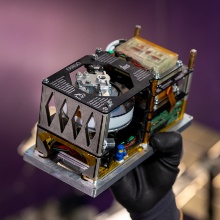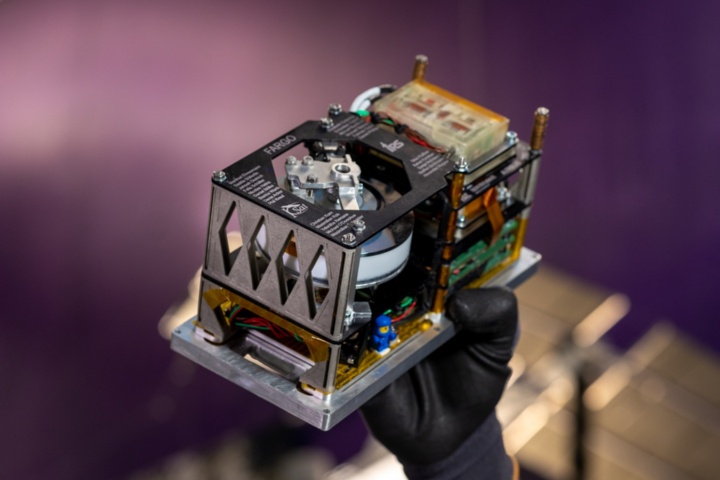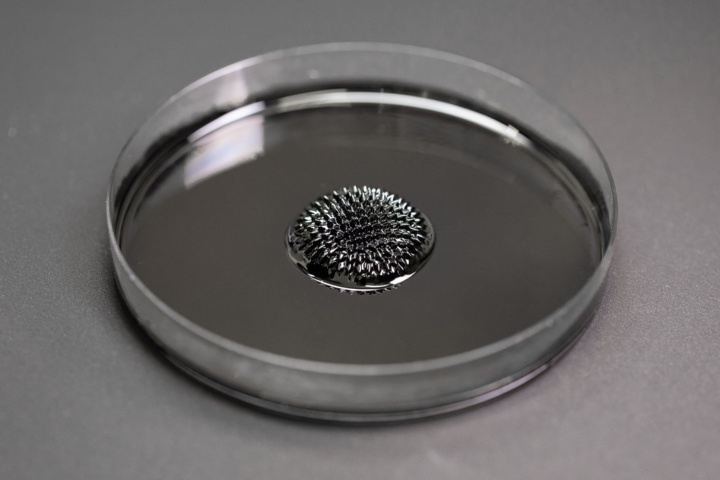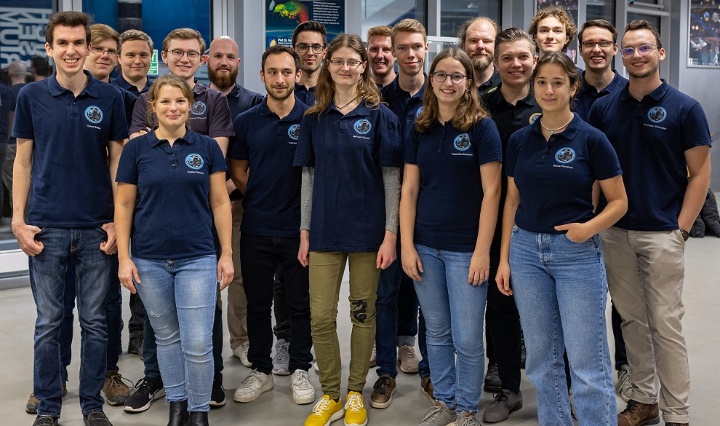On Wednesday, March 15, 2023, at 02:30 a.m. German time, a rocket launched from Cape Canaveral to the International Space Station carrying a ferrofluid experiment from the University of Stuttgart's Student Group "studentischen Kleinsatellitengruppe" (KSat). Meanwhile, the experiment has arrived on the ISS. It will be conducted in space for around four weeks. The aim of the experiment is to find out how to replace mechanical parts such as switches with less wear-prone and more reliable technologies for use in space travel.
The box containing the student experiment FARGO measures only 10 × 10 × 20 cm. From the Cape Canaveral Cosmodrome in Florida, it was launched to the ISS on a Falcon 9 launch vehicle. It is now in the experimental cabinet, where it will remain for about four weeks and run autonomously. It will then be transported back to Earth and handed over to the team of students, which includes Bahar Karahan.
Bahar Karahan is studying aerospace engineering at the University of Stuttgart. In the project, she is responsible for the integration and testing of the thermal switch, among other things. “It’s an indescribable feeling to be working as a student on a space project that will hopefully lay the groundwork for more sustainable space travel. The research field of ferrofluids in space is not yet widespread. So it’s up to us to get it going.”
With the experiment, the students want to test new space travel technologies that are more durable, more reliable, and thus also more cost-effective than before. “Astronauts currently spend up to two hours a day performing maintenance aboard spacecraft. Additional supply flights are sometimes necessary in order to replace defective instruments. This is both time-consuming and costly. In order to realize future missions – for example to Mars – spacecraft must function as maintenance-free as possible,” says Manfred Ehresmann from the IRS, who came up with the idea and supervised the student project.
How do ferrofluids behave in zero gravity?
FARGO stands for Ferrofluid Application Research Goes Orbital. The team of students is investigating how three applications of ferrofluids behave in zero gravity: A thermal switch that controls the transfer of heat between two components, an electrical switch that is designed to close and open a circuit, and a novel system for attitude control of small satellites. These experiments are based on a ferrofluid technology in which the ferrofluid can be manipulated by external magnetic fields to close a current or heat circuit or, in the case of the position control concept, to generate torque. Ferrofluids are liquids containing magnetic particles that react to external magnetic fields. What all three applications have in common is that they dispense with mechanical parts as far as possible, thereby considerably reducing the risk of failure as a result of wear.
The experiment is based on the results of the previous experiment PAPELL (Pump Application using Pulsed Electromagnets for Liquid reLocation), which was already successfully conducted on the ISS in 2018. In the process, a ferrofluid-based pump developed by the student small satellite group was tested in zero gravity.
The students had only about one year to develop their experiment. “For space projects, this is extremely fast,” says Ehresmann. The time factor was one of the biggest challenges. According to Karahan, “The biggest challenge was balancing the project, studies, work, and free time. You may have to repeat a lecture or postpone an exam. “But it’s definitely worth participating in the project – even though it can sometimes be quite time-consuming."
Experiment contains Stuttgart gin
Some of the 23 students in the KSat small satellite group worked seven days a week on the experiment. “Many of us study aerospace engineering at the University of Stuttgart. But we also have students from chemistry, physics, electrical engineering, computer science, and mechanical engineering on the team,” says Saskia Sütterlin, the student project manager. In the project, interdisciplinary cooperation is practiced and is essential. “Our chemistry expert had the idea to use ethanol in the experiment instead of isopropanol. The alcohol evaporates more slowly and stabilizes the mixture. This increases the application reliability for the experiment,” says Ehresmann. This is also why alcohol is now flying into space – about 7 ml of it in the form of a Stuttgart gin.
A thousand names to be flown into space
15 team members will be live on site on March 15, when the rocket launches with the experiment on board. The experiment will be accompanied by around a thousand names submitted as part of the “Fly Your Name” campaign. Among others, Winfried Kretschmann, Minister President of Baden-Württemberg, Petra Olschowski, Science Minister, and Prof. Wolfram Ressel, Rector of the University of Stuttgart will fly into space – if only in name. The students presented them with a symbolic ticket during their visit to the University of Stuttgart in mid-February.
The students were granted the opportunity to conduct their experiment on the ISS after winning the Highflyer 2 competition organized by the German Space Agency at the German Aerospace Center (DLR) and the Luxembourg Space Agency (LSA). There, at the end of 2021, they and three other teams beat eight German and two Luxembourgish teams.
Live broadcast:
The launch of the CRS 27 mission will be broadcast live on the YouTube channel of NASA.
Expert Contact:
Manfred Ehresmann, Institut für Raumfahrtsysteme, Universität Stuttgart, E-Mail, Telefon: +49 711 685 69599





